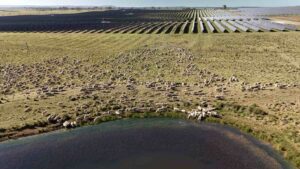The world is 6% warmer on a centigrade basis
It’s been pointed out several times that if we use Fahrenheit or Kelvin temperature scales percentage changes are meaningless, but I find that very few people either know or remember that the 20th century global average land/sea temperature is just 13.9°c.
2018 has seen most months in the 4th-6th warmest on record category with anomalies around 0.7°C, although October was the second warmest October on record. An Excel, auto generated, polynomial best fit has the anomaly trend at just under 0.8°C

So what?
As is well known, global warming is set to continue for many years, no matter what. The sacrifices to world GDP, to peoples’ comfort today, moving away from fossil fuels, are being made mainly for the benefit of the world’s population after 2050.
That is one of the main things that historically has distinguished human beings from other forms of life, our ability to sacrifice a bit today for our future. It’s the basis of saving.
It’s all very well saying, as for example Danny Price does, that Australia’s coal will enable people in India to have a higher standard of living today .
What’s not said is that same coal will help to ensure that many of world’s less well off people, those who live close to the water’s edge, not just in the Pacific but in Asia and Europe, as well as those who live in arid climates will be those that eventually suffer the most.
Here in Australia we can move to higher ground, turn on the air conditioning and watch how it’s all going on TV. Anyhow….
Recently. the US released its once-every-four-years state-of-the-climate report, Volume II “The Impacts”. There is a powerpoint presentation corresponding to each Chapter Climate Change impacts USA. The summary powerpoint is an easy read.
Impacts are likely to be significant but as usual its difficult to be precise. However, I thought it worth focusing on John Englander’s comments on seal level rise, his area of expertise. The following is a direct extract from his latest blog post. John notes the report itself states
- “$1 Trillion dollars of US Real Estate is at risk from flooding due to rising seas, king tides, storms, record rainfall, and runoff. Almost fifty million U.S. residences are at risk (49.4 to use their exact figure).
- More than 60,000 miles of U.S. roads and bridges in coastal floodplains are now vulnerable to extreme storms and hurricanes that cost billions in repairs.
- As much as 10% of the US Gross Domestic Product will be eliminated by flooding, fires, agricultural impacts, and human health effects.
A substantial rise in levels of atmospheric pollutants like ozone and smoke, which can cause respiratory problems and lead to premature death.”
I have several times noted there is strong econometric evidence that sea level rise is now being priced into USA coastal housing. Money talks. BS walks.
John’s extracts and his comments about sea level rise are as follows:
“COMMENT: There is little we can do now to change the rate of SLR by mid century, due to the incredible amount of heat already stored in the sea.
However, the magnitude of human-caused emissions this century significantly affects projections for the second half of the century and beyond.
Relative to the year 2000, global average sea level is very likely to rise by 0.3–0.6 feet (9–18 cm) by 2030, 0.5–1.2 feet (15–38 cm) by 2050, and 1–4 feet (30–130 cm) by 2100…. These ranges do not, however, capture the full range of physically plausible global average sea level rise over the 21st century.
Several avenues of research, including emerging science on physical feedbacks in the Antarctic ice sheet, suggest that global average sea level rise exceeding 8 feet (2.5 m) by 2100 is physically plausible, although its probability cannot currently be assessed.
COMMENT: What we do in the next few decades to aggressively reduce CO2 emissions can have a big impact to slow and limit sea level rise in the latter part of the century. There is a delay in terms of the effect.
We cannot put a numerical probability on the rise of more than 8 feet of SLR, due to the impossibility of predicting the exact collapse rate of Antarctica.
But not being able to determine a number does not mean it is trivial. (As an analogy, if there was a known risk of an avalanche, we would not set our tents in the potential path, regardless of the uncertain probability.)
Regardless of future scenario, it is extremely likely that global average sea level will continue to rise beyond 2100.
[Ancient] sea level records suggest that 1.8°F (1°C) of warming [which has already happened] may already represent a long-term commitment to more than 20 feet (6 meters) of global average sea level rise; Under 3.6°F (2°C), [the goal of the 2015 Paris Climate Accords] about one-third of the Antarctic ice sheet and three-fifths of the Greenland ice sheet would ultimately be lost. [That equates to approximately 75 feet of sea level rise (20 meters).
COMMENT: Sea level will not stop rising for at least a century. What we do in the coming few decades can determine if we eventuallyget 20 feet of sea level rise, or several times that amount.
Even with the extraordinary heat we are adding to the system, it takes a VERY long time to melt ice sheets the size of North America (the area of Antarctica and Greenland combined ) and miles thick.”
John’s comments of course do not cover ocean acidification which mean at a minimum that much of the world’s coral reefs are doomed.










